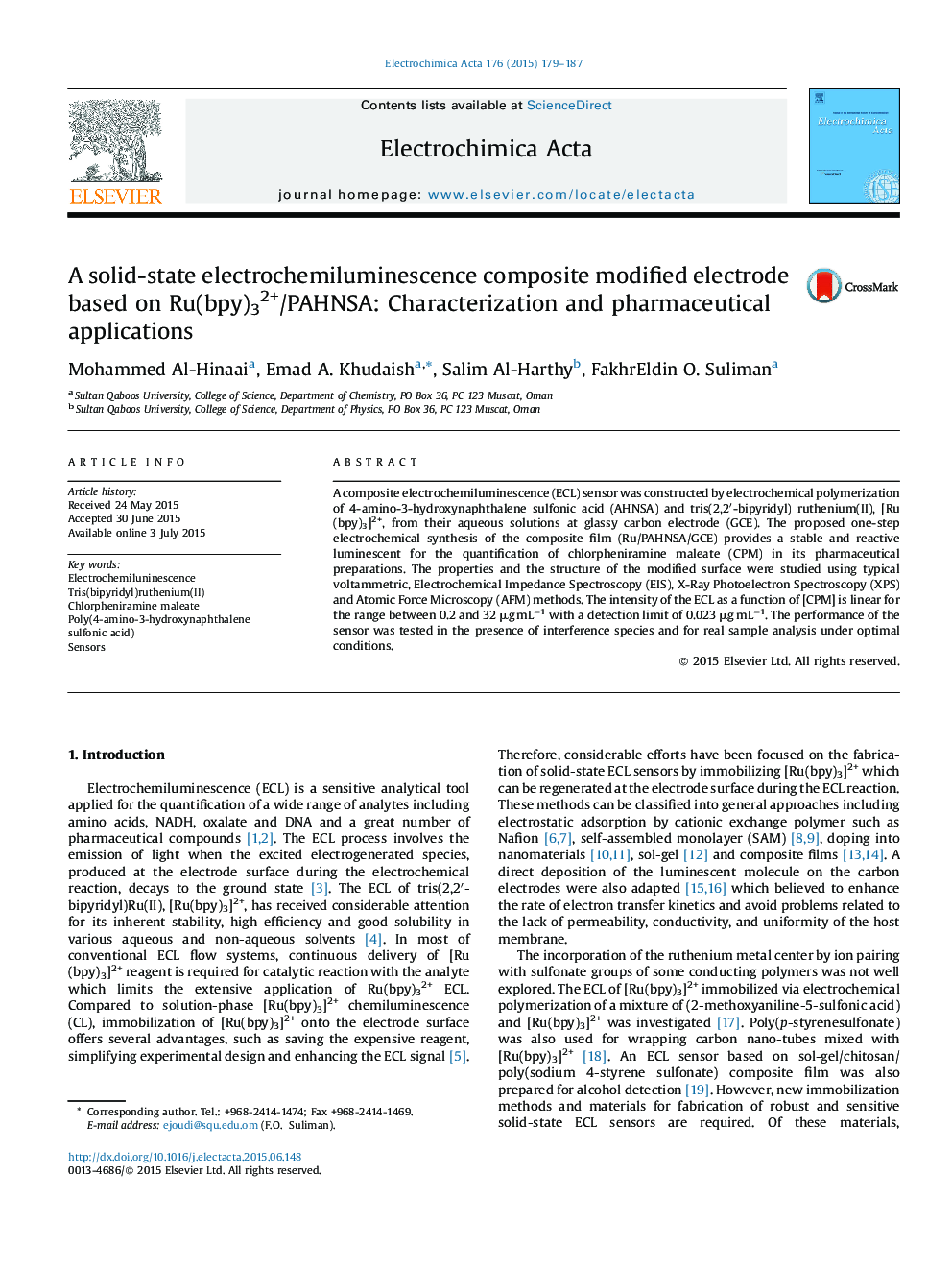| Article ID | Journal | Published Year | Pages | File Type |
|---|---|---|---|---|
| 6610824 | Electrochimica Acta | 2015 | 9 Pages |
Abstract
A composite electrochemiluminescence (ECL) sensor was constructed by electrochemical polymerization of 4-amino-3-hydroxynaphthalene sulfonic acid (AHNSA) and tris(2,2â²-bipyridyl) ruthenium(II), [Ru(bpy)3]2+, from their aqueous solutions at glassy carbon electrode (GCE). The proposed one-step electrochemical synthesis of the composite film (Ru/PAHNSA/GCE) provides a stable and reactive luminescent for the quantification of chlorpheniramine maleate (CPM) in its pharmaceutical preparations. The properties and the structure of the modified surface were studied using typical voltammetric, Electrochemical Impedance Spectroscopy (EIS), X-Ray Photoelectron Spectroscopy (XPS) and Atomic Force Microscopy (AFM) methods. The intensity of the ECL as a function of [CPM] is linear for the range between 0.2 and 32 μg mLâ1 with a detection limit of 0.023 μg mLâ1. The performance of the sensor was tested in the presence of interference species and for real sample analysis under optimal conditions.
Keywords
Related Topics
Physical Sciences and Engineering
Chemical Engineering
Chemical Engineering (General)
Authors
Mohammed Al-Hinaai, Emad A. Khudaish, Salim Al-Harthy, FakhrEldin O. Suliman,
